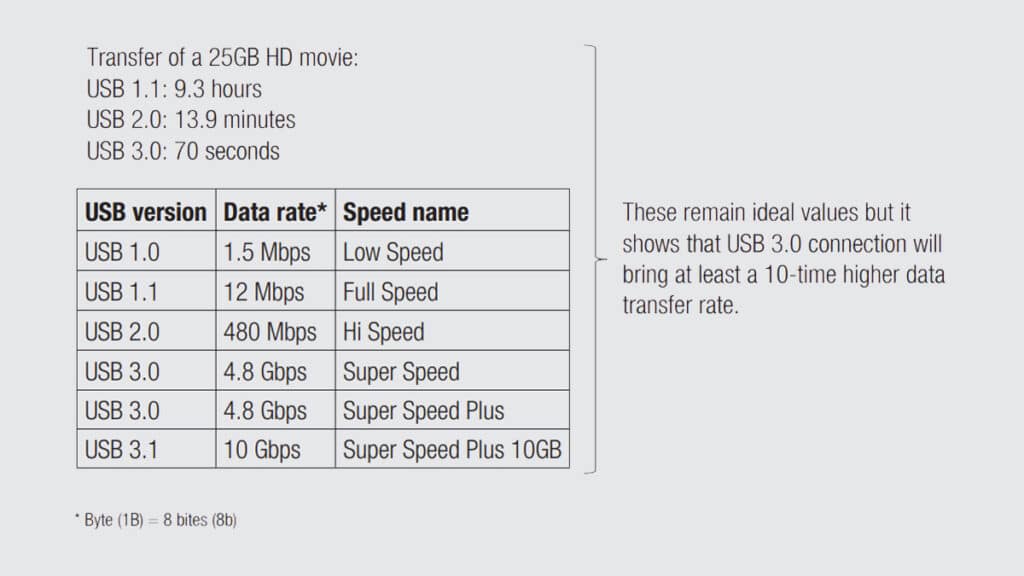The new USB 3.0 standard, also known as USB Super Speed, brings about an impressive ten time increase in bandwidth, compared to the old USB 2.0 standard which tops out at 480 Mbps. This makes it theoretically possible to transfer a 25 GB HD movie in only 1 minute and 10 seconds (versus 15 min with USB 2.0). Simultaneously, the power capacity is increased by 80% compared to USB 2.0. And of course, backward compatibility with former USB standards (2.0 and 1.1) is maintained.
History, Implementation and Main Purpose
The new communication technologies generate an enormous amount of content while storage is simultaneously becoming inexpensive. Therefore, the USB Implementers Forum (USB-IF) acknowledged the need for a new generation of interconnection technologies and released the USB 3.0 specification on November 12th, 2008. This was initiated by the promoter group made up of the following 6 companies: Intel, HP, Microsoft, NEC, Texas Instrument and NXP.
Its initial goal is to offer the same ease of use as USB 2.0, hot plugging functionality, with enhanced power management and a higher data rate. If higher data rate is always pointed out, we must not forget that power management is also a key feature of this new USB protocol since “Sync & Go” applications need to trade off features for battery life.
USB 3.0 aims to bring the following improvements compared to USB 2.0:
• Up to 10x higher data rate than USB 2.0 (4.8Gbps vs. 480Mbps)
• Separate data lanes for up & download enable to read and store files at the same time
• Thanks to higher current capacities, quicker charge of mobile devices through USB
• Better power efficiency thanks to the interrupt-driven protocol
• Backward-compatibility with USB 2.0 standard







